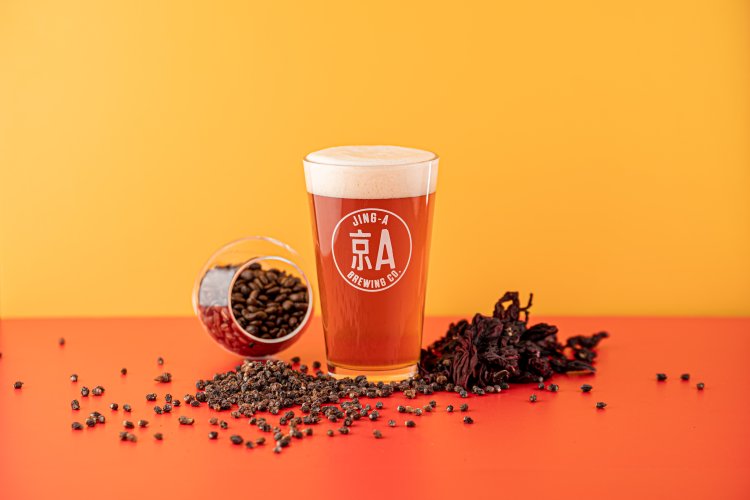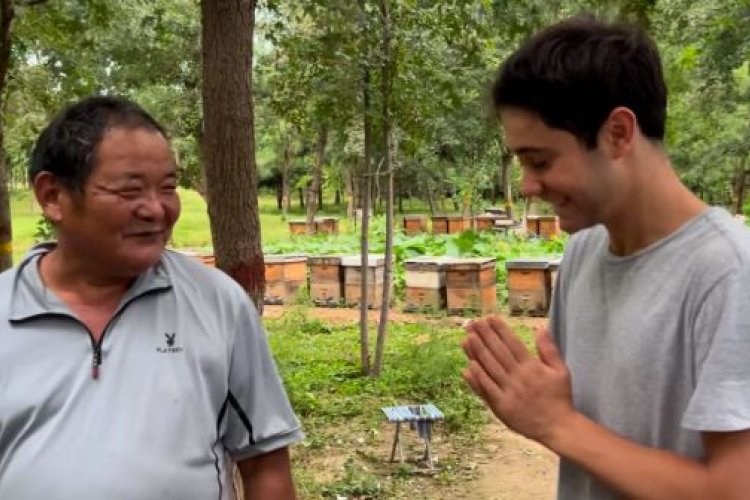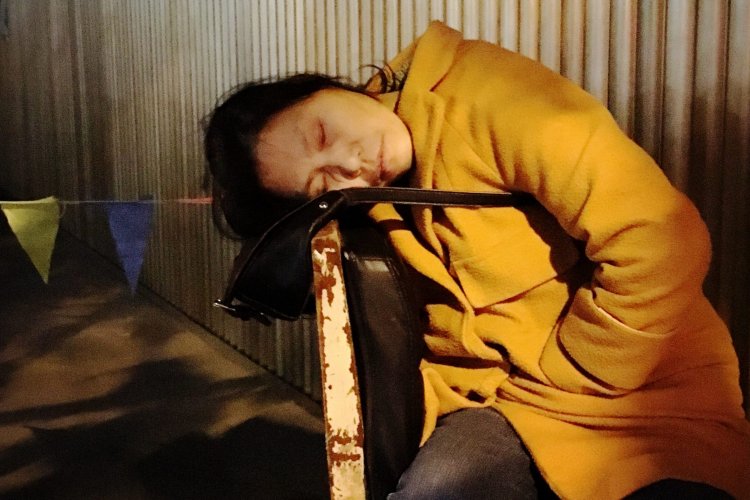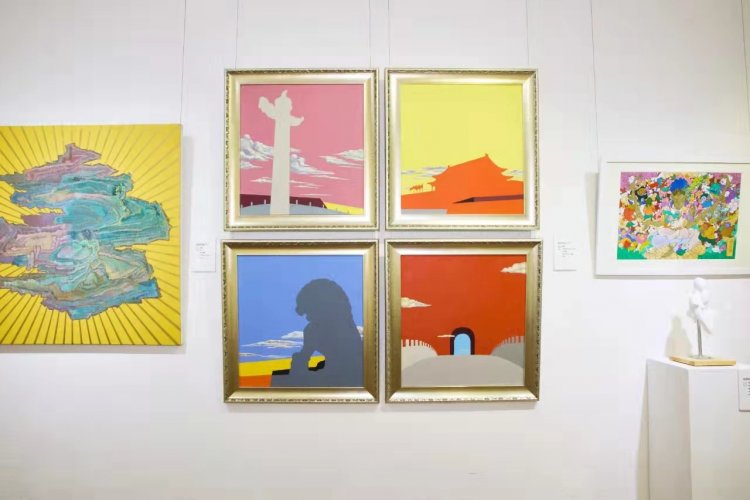"Between Us": A Moving Exhibition at Café Zarah
Reader Discretion Advised: This article contains content related to depression and mental health struggles. Some readers may find the material distressing or triggering. Please take care when reading, and prioritize your well-being.
Mental health matters, and we’re very fortunate to live in a time where this statement is increasingly acknowledged worldwide. Statistics from the WHO point out that in 2019, a staggering 970 million people globally were living with a mental disorder, with anxiety and depression the most common. Addressing the global challenge of mental health is in our best interest.
That’s why today’s story feels so important to me. The exhibition “Between Us – When Words Are Not Enough,” by Julia Hofmann and Lina Zhang, is currently gracing the walls of Café Zarah until Jun 4. It is perhaps the most special collection that the venue has hosted up till now. Hofmann is a photographer, as well as Zarah’s founder. “Between Us” is a project woven in collaboration with her daughter Lina, who contributed her own paintings. Hofmann felt great distress and unease at the sight of Zhang’s incipient signs of anxiety and depression in her preteen years. In the ongoing journey that soon ensued, Zhang herself had to develop new strategies and methods that allowed her to envision healing. Silence didn’t last long, for both women had an overwhelming need to communicate. But there was a missing piece – art.

There is something incredibly touching in the openness and resilience of my subjects today. Hofmann’s honesty felt vulnerable and raw; her introspectiveness surely is one of the best gifts she could possibly offer to her daughter. Zhang was disarmingly straightforward and mature for her age, yet never precious or aloof. Hofmann observed that they’re still navigating their struggles. Hope, she confessed, is a beautiful yet fluctuating force that must coexist with the reality that their lives are still defined by ups and downs. How relatable is that? I engaged in the conversation below with gratefulness and an open mind. I think that should be your approach too, dear reader, when you hopefully check this powerful exhibition at Zarah yourself.
Hi, Julia, it’s a pleasure to have met you both. Tell me a bit more about “Between Us.”
JH: Sure. This exhibition is a mother-daughter dialogue encompassing a series of mental health-related themes: depression, self-harm, emotional escape, and helplessness. We struggled greatly at first with an inescapable feeling of isolation that we needed to overcome before we could advance any further. In that sense, “Between Us” is a quiet call, a look back and then inward. We were faced with this pain for which we had no appropriate words, so we strived to find our way through art and photography. We still are.

I think many can relate to these topics. How did this all start?
JH: Let’s see, so Lina was born here in Beijing in 2011, mere years after we opened Zarah in 2007. As her schooling years approached, we moved back to Germany – sort of, anyway. It was a decision that we took upon considering a series of factors for our little family. We concluded that the best course of action was to go back and forth between both countries, at least until Covid hit. Like many others at the time, we were stranded and could not return here. Lina was then starting second grade, and wasn’t really thriving at school. She suddenly found herself spending a lot of time home, and the forced isolation of the pandemic years made her anxiety peak. Eventually, we decided to transfer her to a new school without grades and a more open-minded approach to education. We figured this would fix things, but it wasn’t the case. She confided in me that she carried this deep sadness, and we finally realized that we were dealing with depression.
It must have been a moment fraught with fear and emotions. What came into play in this crisis?
JH: Unfortunately, Lina had to figure out how to forge new friendships when her former group underwent a series of changes. It was around that time that she started struggling with wanting to attend school. I will confess that I, too, had a hard time grappling with the situation. I was still processing everything, and I hadn’t even been particularly fond of school myself. My own memories of my student years made it hard to come up with ways to incentivize her own school attendance.
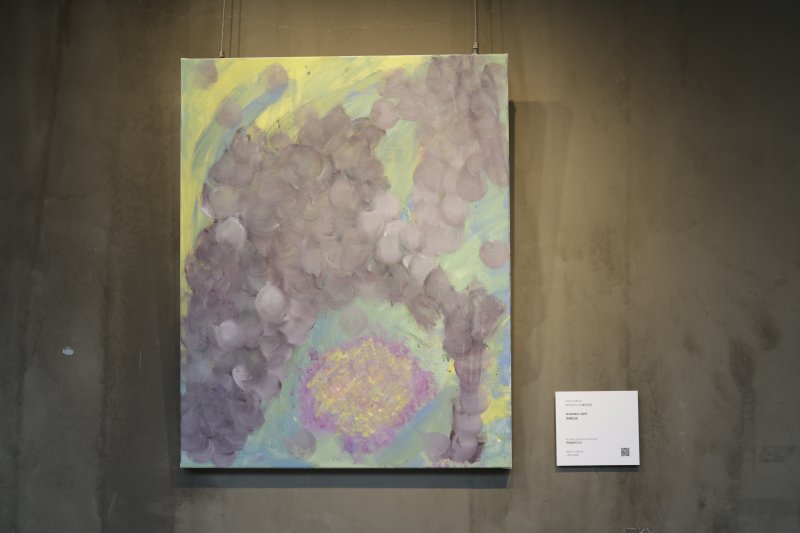
Lina, your mother’s testimony is undoubtedly valuable, but I think it’s also important that you have your own voice in this interview. When does art come into the picture here?
LZ: Art had always been part of my life, somehow. It was always this channel for me to release my feelings, and in this challenging time, I found more strength in painting precisely because I was experiencing these intense emotions. I also grew up watching my mother’s own exploration of her preferred medium. I would also say that it’s always been crucial to me to have freedom in art. I don’t like the rigid impositions that often come in the name of formal artistic training.
What was your medium of choice for the project that eventually culminated in this exhibition?
LZ: When I was younger, I used watercolor to paint. But over the years, I switched to acrylics. I prefer them to watercolor because the colors stay on even when you apply water to them, and they’re not transparent. I also tend to prefer abstract painting, which I’ve always used to express my emotions. The first time I used acrylics was for my grandma's birthday last year; it was a point of pride for me back then, and I am even prouder now since I am trying my best to get better, even though it's still hard to deal with my depression. These paintings are my emotions, quite literally.

Fascinating. It occurs to me that acrylics carry the gravitas of this moment in time for you, Lina, in a very meaningful way. How about you, Julia?
JH: I am very supportive of her need for unrestrained artistic expression because once again, I can relate to it. Photography has been my lifelong medium of choice to process events and emotions in my own timeline. There is something else that persists in each of the works comprising this project that we started early this year: the emotional distress that I may have passed onto Lina, albeit involuntarily so. We arrive into parenthood from lives of our own, fraught with our own challenges that shape us. It is no wonder, then, that we pass coping strategies, patterns of conduct and more onto our children. This was a discovery that I had to make on my own. And I had to come to terms with my findings in the process. I had to do some rather profound soul-searching before I could be a proper companion to Lina in her own struggle. I have to be a conscious mirror for her now.
How did this dialogue unfold?
JH: Not from any conscious planning but rather from our talks. Everything was so organic. It’s always been like this for my photography, anyway, and it feels only right now, too. We’re influencing each other in the process.

Where did you take your photographs?
JH: A combination of our neighborhood in Germany, our family home and my mother’s place. Sometimes a combination of either of these three via double exposure. Incorporating my mother’s home has no ulterior motives, though I do suppose I feel rather calm there. It’s not like my photography always calls for calmness, either. I did seek it this time, because the circumstances surrounding this specific project were intense enough. Lina also painted her pieces in Germany.
I see you wanting to add something here, Lina…
LZ: I was thinking about how I often feel that, even though my mind is often more mature than what you’d typically expect for a kid my age, I still very much act in childlike ways. And I think it’s important to make use of that prerogative – that permission to act like a kid, while you can. After a certain age, people no longer extend that courtesy to you, and they just assume you’re weird or something.

If I may weigh in, I think one of the most liberating moments of adulthood is coming to terms with the fact that we’re all a little weird, a little lost. And speaking of people, I want to hear from both of you on this. What’s your advice for parents and children going through challenges similar to yours?
LZ: I am agnostic, and therefore unsure of the existence of a divine presence. So, whenever I hear religious people state that God always has a plan for each of us, my own spin is this: Life does have its own plans for you. And life does go on. Nothing is permanent. Happiness and sadness are kind of the same in this way; they fluctuate, overlap and make space for each other.
JH: Advice, huh? (laughs) Look at yourself first, as a parent. By doing this, you’ll empower yourself to cast new light upon the many issues that await your child. I feared so much myself, which was weighing me down. I had to take this long, hard look at myself before I could be there for her as I want to be – as she needs me to be.
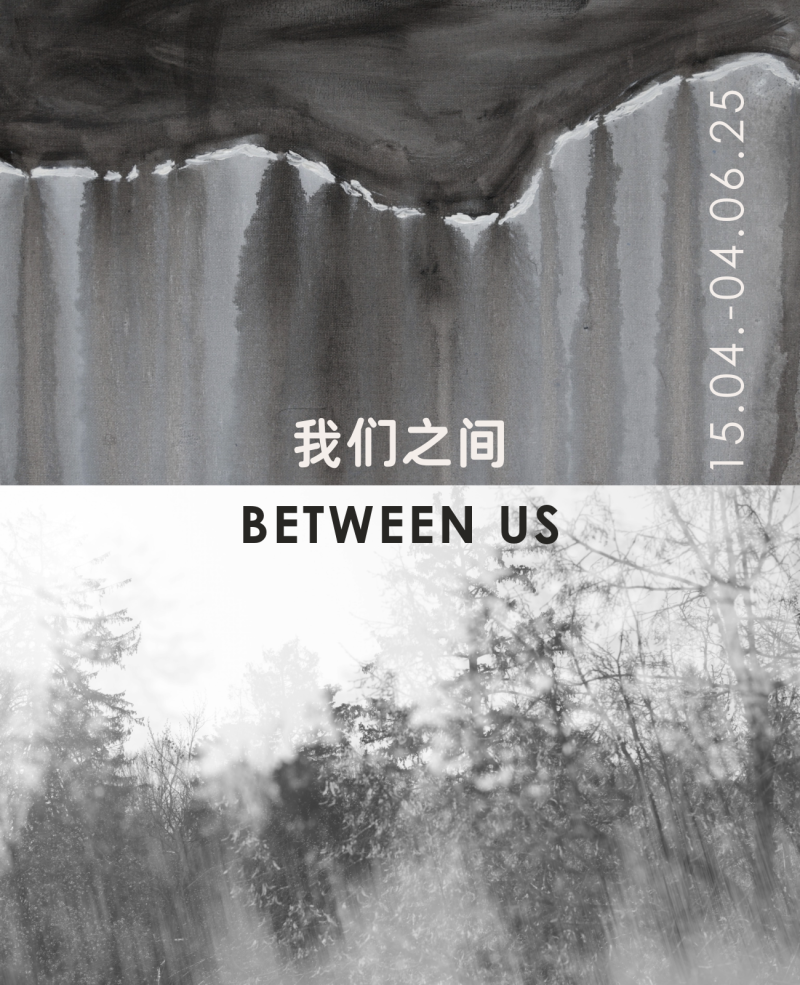
The exhibition “Between Us – When Words Are Not Enough” is on show at Zarah now until Jun 4. Entry to the exhibition is free.
Zarah
46 Gulou Dongdajie, Dongcheng District
东城区鼓楼东大街42号
Hours: Sun-Thu, 10am-midnight; Fri-Sat, 10am-1am
Phone: 010 8403 9807
READ: Silent Emptiness: Japanese Artist Chiharu Shiota at Red Brick
Images: courtesy of Julia Hofmann and Lina Zhang


